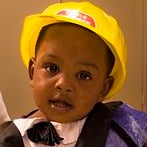
Speech in everyday life
By: Lindsay Versprille, MA, CCC-SLP
As a therapist who works full time in the natural home environment, I am lucky enough to see a range of ages and a range of speech delays/disorders that I treat. I have seen babies fresh from the NICU and pre-teens entering middle school. No matter what the age or goal, the take home message for parents is always the same—work on this at home! Work on it every day! After all, out of 168 hours in the week, we are at a house max 2 hours. That’s so much time unaccounted for!
However, as a mom myself, I am fully aware how difficult these simple instructions can be. We are all so busy. School, therapies, practices, siblings, appointments, mealtimes, daily routines. How in the world are we supposed to fit in practicing speech every day? That’s the point. You don’t necessarily need to make time for speech practice…you incorporate it into what you’re already doing. After all, are we teaching these kids specific requests so that they only know how to ask for another piece of a puzzle? Are we teaching a child the /r/ sound so that he knows how to say “raisin” during a board game? No! We want her to be able to request a snack when she’s hungry and we want him to be able to talk about Roblox with his friends at school. So while we may use specific tools/toys during therapy to facilitate these specific requests/goals, it is so important that they are able to generalize the skills at home and in their natural environment. That’s where the caregivers come in!
In order for a child to truly master a skill (for example, making a simple one-word request), they need to use it across a range of daily activities in their natural environment. We want them to be able to use a one-word request during breakfast and when they go to bed. This seems like a daunting task. But it’s not…if you use the SKILLS you are taught by the therapist rather than the MATERIALS. Skills would be the way a therapist is eliciting the request, sound, or skill during a certain game/activity. For instance, holding an item up and modeling a request 3x or touching a child’s throat to elicit the /k/ sound. These skills are easily used anywhere!
Here are some examples of how to use speech therapy skills across daily activities without any fancy materials or activities:
1. Breakfast (For a child whose goal is requesting): Instead of handing a child a favored breakfast bar, hold up a breakfast bar and a cucumber. Ask “what do you want?” If the child reaches for the breakfast bar, model “Bar.” If the child does not imitate, repeat twice more with pauses in between. If she still doesn’t request, model the request once more and have her point/gesture to the bar before excitedly handing it to her and saying “bar!”
2. TV time (for a child whose goal is using a communication card): Instead of turning the TV on, have your child exchange a communication card with an image of a TV or their favorite show on it before turning it on. Always use a word in conjunction with the card!
3. Car rides (for a child whose goal is to comment/use any verbalization): Point out objects outside of her window and comment constantly. “Wow! Dog! Woof woof! Bye dog!” “Oh a truck! Beep beep! Beep beep!” “We’re here! Yay! Yay! Yay!”
4. Target trip (for a child whose goal is to use the /g/ sound): Play a game of “I Spy” while you’re walking through the store/riding in the buggy and have them guess what “g” word you’ve spotted. For example “I spy with my little eye, something that you chew and is in a green package and you can blow into a bubble.” Or “I spy with my little eye something that you play with dice, is in a box, and someone wins!” If they have difficulty with the sound, you can easily prompt them with whatever technique/strategy their therapist has used!
5. Down time (for a child who is learning new words): Sing “Itsy Bitsy Spider,” “Twinkle Twinkle,” “The Wheels on the Bus,” etc. Keep the song consistent across the week so that he can hear it over and over. Slowly start pausing at the end of the song expectantly, indicating that you’d love for him to complete it (“Oh (for EIEIO),” “town,” etc.). If he does not verbalize, sing that final word emphatically. Use hand motions and encourage him to imitate.
6. Bath time (for a child who is working on sign): This is especially useful for kids who LOVE bath time! Bring your child into the bathroom with you and turn on the water. After turning it on for a few seconds, turn it off. Stop and wait. If your child looks at you expectantly, ask “What do you want?” Give her a few seconds to request before asking again. If she does not use a sign/word, you can use hand over hand assist for the “on” sign before turning the water back on. Do this several times to get as much practice as possible!
7. Reading time (for any child!): Books are my favorite way to elicit language from all of my clients. I use them with my babies and with my teenagers! They are so versatile and can be used for any goal a child has. Don’t have books at the house? No problem! Use a newspaper or a cookbook or a magazine. The trick here is not to read the book. But to tailor the book to your child’s goals. Is your child working on identifying common objects? Have her point out the ball, car, grass, flower, etc. on the page. Is your child working on the letter /r/? Play a guessing game where you give him a hint about something you spy on the page (“I see something with long ears that hops”). Working on making animal/environmental sounds? Point to each animal on the page and make the sound, pausing to give your child time to repeat!
Again, what matters in our speech goals is the SKILL not the ACTIVITY. There is no one activity that your child will be doing ALL OF THE TIME. What’s important is that they are able to generalize the skill across multiple daily routines/activities. That’s when it is considered mastered. You don’t need any special tools to carry over goals. All you need is the carryover SKILL that your therapist has given you. A skill that can be used anywhere, anytime and by anyone.
OTHER TIPS AND SUGGESTIONS FOR INCREASING LANGUAGE AT HOME:
• Make activities fun. Show your child that you’re having a great time to encourage her to do the same.
• Use SINGLE WORDS. This is VERY important for kiddos learning to talk. What we hear as “Here, put on your shoes” may be very confusing for kids learning to speak. Instead, pick out the important one or two words that you’re trying to convey and use those. “Here, put on your shoes” could turn into “Shoes” or “Shoes on.” “Here buddy, take a little bite to eat” could turn into “bite” or “one bite.”
• Talk about what he’s paying attention to. If he is zoning in on a cup, use that. Say “Cup” and pretend to take a drink saying “mmmm!”
• Model signs (babysignlanguage.com) throughout daily activities just as you would words. Even if it is just when you are talking to him (e.g. you could model “milk” paired with the word when giving him milk in the morning or “all done” when everyone gets up from the table in the evening). ALWAYS use the word with the sign. Never use a sign silently. (BabySignLanguage.com)
• Silence is key! Use lots of pauses and empty “ends” to sentences, looking at him expectantly. He should NEED to communicate or request and this is the best way to start!


